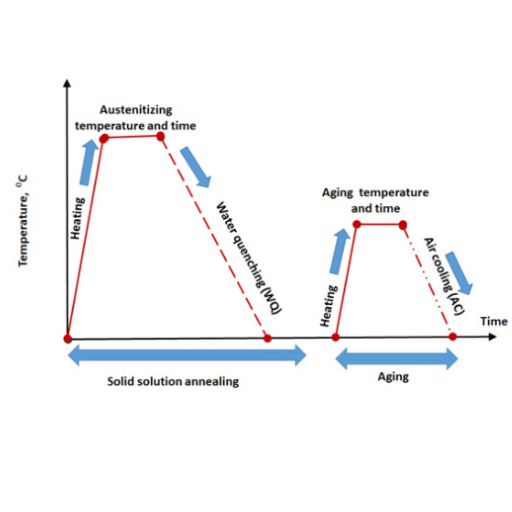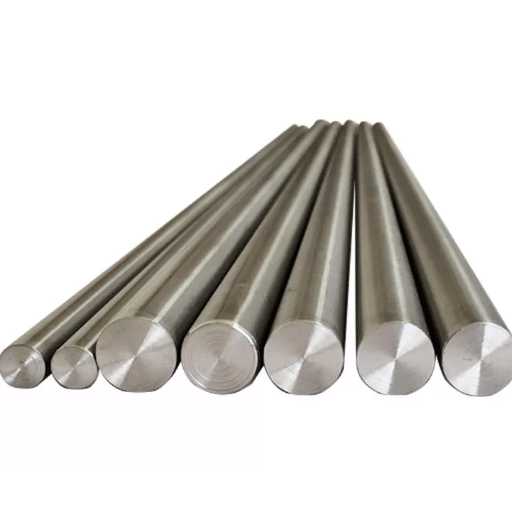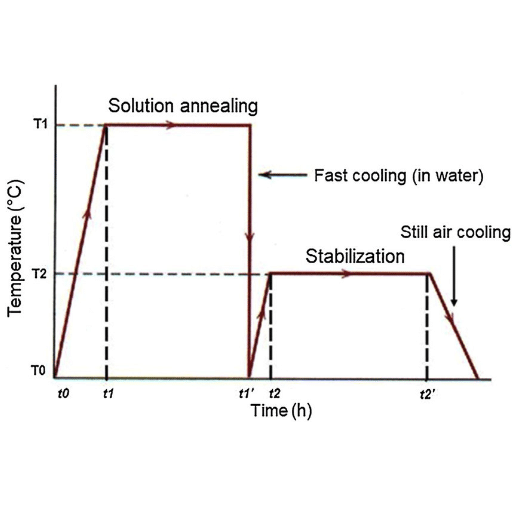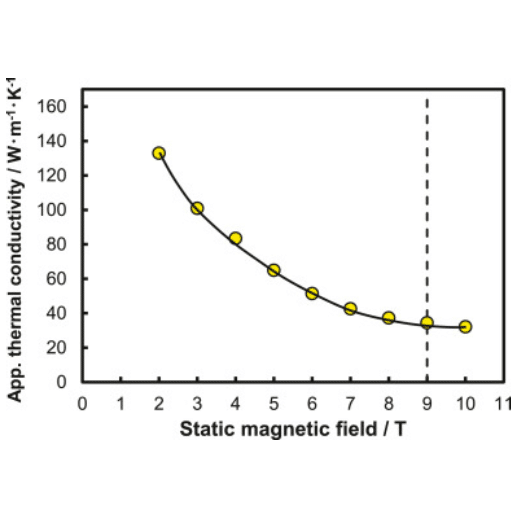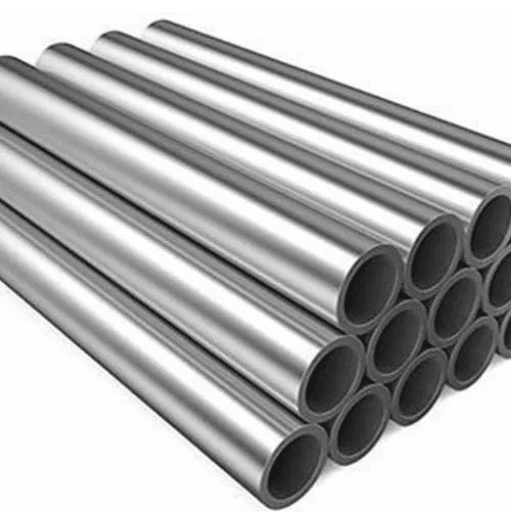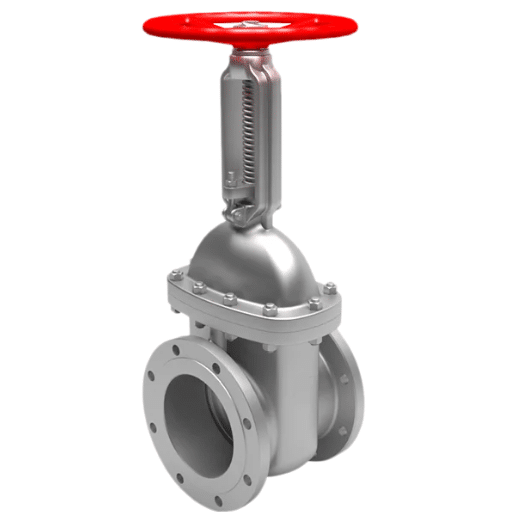Super duplex stainless steel is undoubtedly the best material to consider when the talk is about materials with outstanding strength, corrosion resistance, and durability. This alloy with its unique metallurgical features and composition has already begun influencing the engineering and manufacturing sectors dealing with harsh environments big time.
Understanding Super Duplex Stainless Steel
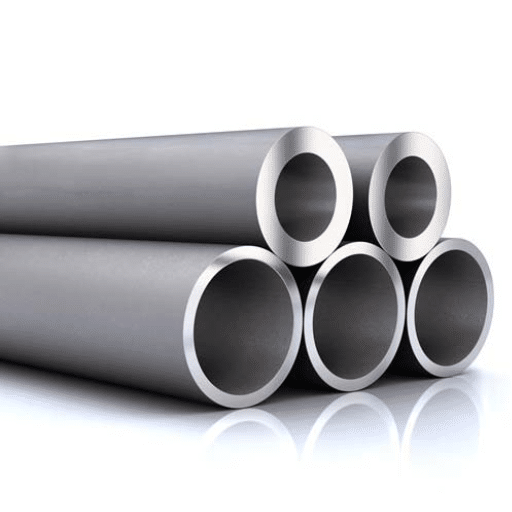
Super duplex stainless steel is a very hi-tech alloy which is remarkable for its excellent strength, extremely good resistance to corrosion, and durability. Its properties are the best of both stainless steels, austenitic and ferritic, allowing it to be used in extremely difficult environments giving even more support to its use.
This material finds its main application in such industries as oil and gas, chemical processing, and marine operations as it can endure tough environments consisting of high-pressure and very hot or very cold conditions.
What is Super Duplex Stainless Steel?
Super Duplex Stainless Steel is an alloy that offers excellent durability and corrosion resistance. The main components of this alloy are:
- Iron – Base metal
- Chromium – For corrosion and oxidation resistance
- Molybdenum – For localized corrosion resistance
- Nickel – For structural stability
Composition of Super Duplex Alloys
Super Duplex Stainless Steels feature a 50/50 ratio of austenite and ferrite, which gives them their special properties. The composition typically includes:
| Element | Percentage Range | Primary Function |
|---|---|---|
| Chromium (Cr) | 22-25% | Corrosion and oxidation resistance |
| Nickel (Ni) | 4.5-7% | Structural stability |
| Molybdenum (Mo) | 3-5% | Pitting and crevice corrosion resistance |
| Nitrogen (N) | Variable | Enhanced pitting resistance and strength |
Additional trace elements may include copper, tungsten, silicon, carbon, manganese, and phosphorus, which contribute to the modification of properties for specialized applications.
Comparison with Duplex Stainless Steel
| Feature | Duplex Stainless Steel | Super Duplex Stainless Steel |
|---|---|---|
| Chromium Content | Lower | Higher (25-27%) |
| Molybdenum Content | Moderate | Higher (3-5%) |
| Nitrogen Content | Standard | Optimized/Higher |
| Corrosion Resistance | Good | Excellent |
| Mechanical Strength | High | Very High |
| Typical Applications | Moderately corrosive environments | Harsh offshore, chemical, marine |
| Cost | Lower | Higher |
Grades of Super Duplex Stainless Steel
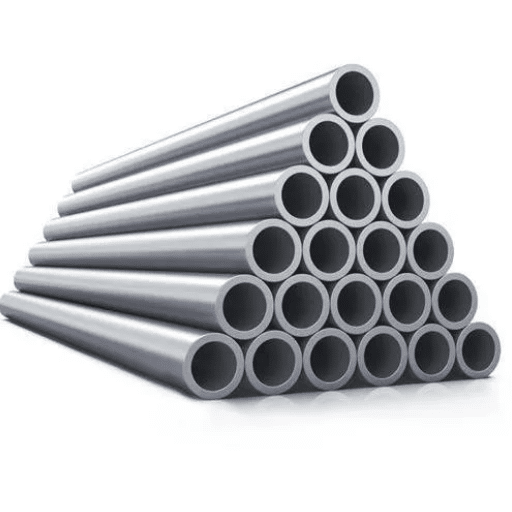
Super Duplex Stainless Steels are divided into various grades, with each grade having its own specific features for particular applications. The mechanical properties, corrosion resistance, and operating conditions are the main considerations for grading.
Overview of Stainless Steel Grades
Stainless steel is divided into five main categories:
- Austenitic Stainless Steel – Most frequently utilized category, recognized for great corrosion resistance and high formability (Grades 304, 316)
- Ferritic Stainless Steel – Higher chromium but lower nickel content, resistant to stress corrosion cracking (Grade 430)
- Martensitic Stainless Steel – High-carbon types with high strength and hardness (Grade 410)
- Duplex Stainless Steel – Mixture of austenitic and ferritic structures with superior strength and corrosion resistance
- Precipitation-Hardening Stainless Steel – Renowned for extraordinary strength (Grade 17-4PH)
Common Super Duplex Grades
| Grade | Alternative Name | Chromium % | Molybdenum % | Key Features | Common Applications |
|---|---|---|---|---|---|
| UNS S32750 | SAF 2507 | 24-26% | 3-5% | Excellent mechanical properties | Chemical processing, petrochemical, shipbuilding |
| UNS S32760 | – | 24-26% | 3-5% | Added tungsten for enhanced strength | Offshore and marine engineering |
| UNS S32550 | – | 24-27% | 3-5% | Balance of corrosion resistance and performance | Various industrial applications |
Duplex Stainless Steel Grades Overview
- UNS S31803 – Popular in chemical processing and pulp and paper industries due to dual-phase microstructure
- UNS S32205 – Excellent toughness and resistance to pitting corrosion
- UNS S32760 – Enhanced with tungsten and increased molybdenum for subsea pipelines and desalination plants
Mechanical Properties of Super Duplex
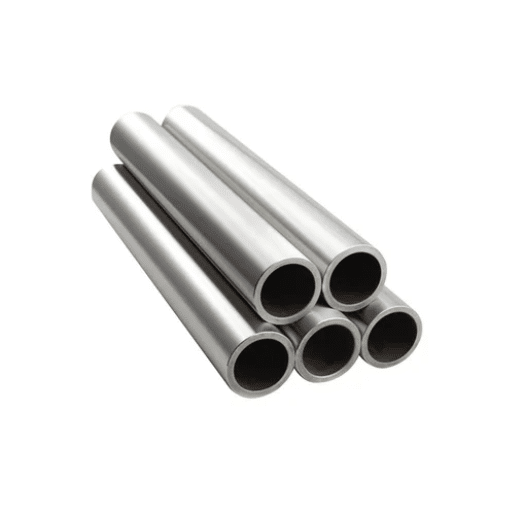
Super duplex stainless steels exhibit outstanding mechanical properties that make them ideal for demanding applications.
Key Mechanical Properties
| Property | Value Range | Comparison |
|---|---|---|
| Yield Strength | 550-800 MPa | Much higher than austenitic grades |
| Tensile Strength | 750-800 MPa | Almost double that of grades 304/316 |
| Elongation | 15-25% | Excellent ductility maintained |
| Charpy Impact (Room Temp) | >100 Joules | Exceptional toughness |
Benefits of high strength:
- Permits use of thinner sections in structures
- Reduces total weight
- Lowers overall costs
- Maintains performance under heavy loads
Impact of Heat Treatment on Properties
Heat treatment is a critical step in the production of super duplex stainless steels (SDSS) that significantly affects their microstructure and mechanical properties.
Risk: Extended exposure can lead to precipitation of harmful intermetallic phases (sigma phase and chi phase) that compromise corrosion resistance and toughness.
Key considerations:
- Controlled heating and cooling optimize ferrite and austenite distribution
- Post-weld heat treatments (PWHT) restore phase balance after welding
- Rapid quenching after annealing prevents unwanted microstructure transformations
- Modern computational simulations help optimize treatment conditions
Resistance to Embrittlement
Resistance to embrittlement is critical for materials exposed to harsh conditions. Embrittlement mechanisms include:
- Hydrogen embrittlement – Mitigated by chromium and nickel additions
- Thermal aging – Controlled through proper heat treatment
- Mechanical fatigue – Addressed through alloy composition optimization
Prevention methods:
- Tempering processes
- Controlled quenching
- Precise control of processing factors
- Regular tensile testing and fracture mechanics analysis
Applications of Super Duplex Stainless Steel
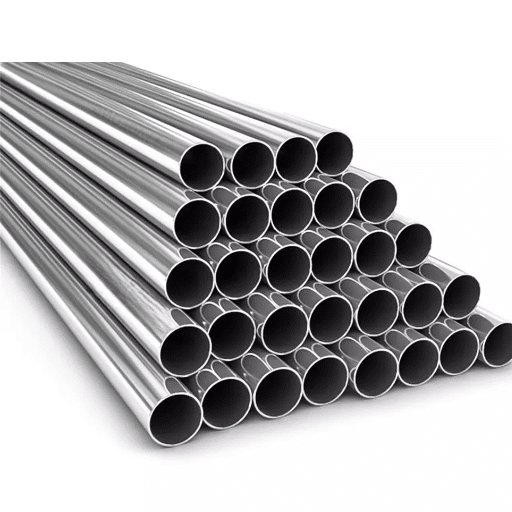
Super Duplex Stainless Steel (SDSS) is regarded as a material with superior mechanical properties, remarkable resistance to corrosion, and a good price-performance ratio in a wide range of difficult environments.
Major Industries Utilizing Super Duplex
| Industry | Applications | Key Benefits |
|---|---|---|
| Oil and Gas | Subsea pipelines, heat exchangers, pressure vessels, flowlines, manifolds | High resistance to stress corrosion cracking and pitting; PREN >40 |
| Chemical Processing | Tanks, reactors, pipelines for aggressive substances | Long lifespan, reduced maintenance costs |
| Desalination Plants | High-pressure pipes, condensers, intake systems, evaporators | Excellent resistance to brackish and saline water; high thermal conductivity |
| Marine & Shipbuilding | Propeller shafts, rudders, ballast tanks | Resistance to uniform and crevice corrosion in saltwater |
| Renewable Energy | Offshore wind turbines, tidal energy platforms | Withstands corrosive marine environments and cyclic loading |
Specific Applications and Use Cases
Seawater Intake Systems
- High corrosion resistance to chloride concentration
- Up to 40% lower maintenance costs vs. traditional materials
- Extended service life for pipelines and pumping systems
Evaporators in Thermal Desalination
- Ideal for MSF (Multi-Stage Flash) and MED (Multi-Effect Distillation) processes
- Resistance to both corrosion and scaling
- Maintains structural integrity at high temperatures and salinity
Reverse Osmosis Equipment
- High-pressure vessels and piping withstand extreme stress
- Minimized maintenance downtime
- 35% reduction in failure rates compared to conventional materials
- Extended system lifespan
Heat Exchangers
- Remarkable thermal conductivity
- Excellent corrosion resistance with brine or seawater
- Efficient heat transfer maintained
- Minimal material degradation at temperatures >100°C
Water Transmission Pipelines
- Long-distance transmission capability
- Mechanical strength and bio-fouling resistance
- 50% reduction in leakage incidents vs. carbon steel
- Ideal for mineral-rich or saline water
Key Advantages in Various Applications
| Advantage | Impact | Quantified Benefit |
|---|---|---|
| Corrosion Resistance | Extended material lifespan in chloride-rich environments | 3-4x longer than standard steel |
| Structural Strength | Withstands high pressures in transmission systems | Can bear >400 bar pressure |
| Reduced Maintenance | Less scaling and fouling | 20-30% annual cost reduction |
| Leakage Prevention | Superior welding and tensile strength | 50% reduction in leakage incidents |
| Environmental Compatibility | Eliminates biofouling and chemical cleaning needs | More sustainable water management |
Lean Duplex vs. Super Duplex
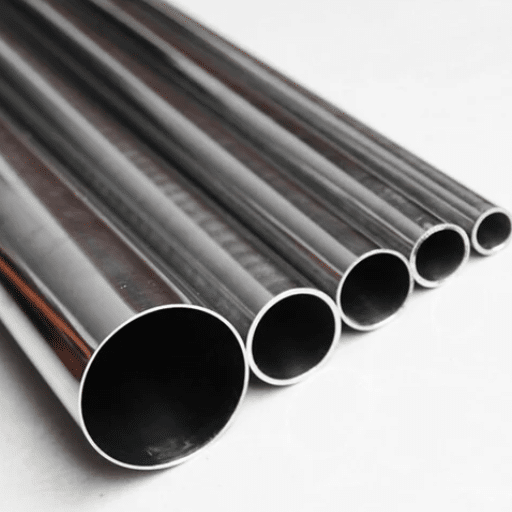
Understanding the differences between Lean Duplex and Super Duplex stainless steels is crucial for material selection.
Differences in Composition and Properties
| Characteristic | Lean Duplex | Super Duplex |
|---|---|---|
| Chromium Content | 22-26% | 25-27% |
| Nickel Content | Lower (cost reduction) | 4-7% |
| Molybdenum Content | Lower | Higher (increased pitting resistance) |
| Nitrogen Content | Standard | Increased (better stress-corrosion cracking resistance) |
| Cost | Lower (economical) | Higher (premium performance) |
| Corrosion Resistance | Moderate | Exceptional |
| Typical Environment | Less severe conditions | Extremely harsh/aggressive |
Applications and Performance Comparison
| Application Area | Preferred Material | Reason |
|---|---|---|
| Structural engineering, water handling | Lean Duplex | Cost-effective for moderate corrosion environments |
| Offshore oil and gas operations | Super Duplex | Extreme corrosion resistance required |
| Mild chemical processing | Lean Duplex | Adequate performance at lower cost |
| Deep-sea operations | Super Duplex | High pressure and corrosive environment |
| Desalination plants | Super Duplex | High salinity and pressure demands |
| Pulp and paper manufacturing | Duplex/Lean Duplex | Chloride stress cracking resistance |
| Construction and civil engineering | Lean Duplex | Balance of strength and cost-effectiveness |
Choosing Between Lean and Super Duplex
Select Lean Duplex when:
- Cost is the primary consideration
- Operating in moderately corrosive environments
- Applications include storage tanks, structural components, or water treatment in mild conditions
- Budget constraints are significant
Select Super Duplex when:
- Operating in aggressive, highly corrosive environments
- High-pressure and extreme temperature conditions exist
- Long-term reliability and durability are critical
- Applications include offshore platforms, chemical plants, or marine operations
- Lifecycle cost analysis favors higher initial investment for reduced maintenance
References
-
Guidance Document for the Evaluation of Super Duplex Stainless Steel – UNT Digital Library
This document provides detailed information on testing super duplex stainless steels to ASTM standards. -
Structural Stability of Super Duplex Stainless Weld Metals – Harvard ADS
A study on the production and structural stability of super duplex stainless weld metals under specific conditions. -
Metallurgical Evaluation of Cast Duplex and Super Duplex Stainless Steels – UNT Digital Library
Frequently Asked Questions (FAQ)
What is super duplex stainless steel and its properties?
Super duplex stainless steel is a corrosion-resistant and strong material at high temperatures with a unique combination of mechanical properties. Its high chromium content along with low nickel content and other alloying elements contribute to the material’s stability and durability in extreme environments.
How does super duplex compare to standard austenitic stainless steels?
A super duplex stainless steel like 1.4462 grade not only gives high strength but also it is more resistant to pits and crevices than standard austenitic steel like 304. Thus, super duplex becomes the best option for use in aggressive areas.
What are the common applications of super duplex steel?
Super duplex stainless steel is extensively used in the petrochemical, chemical and marine industries for items like piping, fittings, flanges, and fasteners because of its remarkable mechanical properties along with its resistance to corrosion.
What is the composition of super duplex stainless steel?
The usual content of this alloy ranges from 20-25% chromium, 3-5% molybdenum, and a small amount of nitrogen while, adding also small amounts of other elements such as nickel, carbon, silicon, manganese, and phosphorus to form super duplex stainless steel. The composition of super duplex stainless steel varies according to specific requirements, but in general, it consists of high chromium, molybdenum, and nitrogen levels for strong resistance to corrosion and high strength.
How does heat treatment affect super duplex stainless steel?
The impact of heat treatment on super duplex stainless steel can be major as it initially helps to increase its mechanical properties and fine grain size. If the heat treatment process is done properly, it can even make the material stronger and less prone to stress corrosion cracking thus improving its “isolation” quality.
What are the mechanical properties of duplex stainless steel?
Duplex stainless steel and subclasses, such as 1.4462, show splendid mechanical properties which include but are not limited to high tensile strength, excellent welding ability, and resistance to fatigue. In view of the aforementioned attributes, it is possible to use that kind of steel even in very demanding applications.
What is the significance of grain structure in super duplex stainless steel?
The significance of grain structure in super duplex stainless steel is that it is a determinant factor for the material’s mechanical strength and also resistance. Fine microstructure is generally chosen to be able to increase toughness and hence, general performance in difficult to operate environments.
How does super duplex stainless steel resist corrosion compared to ferritics?
When compared with ferritics, super duplex stainless steel shows much higher resistance to corrosion since it has a significantly greater amount of chromium and molybdenum in its composition. Thus, super duplex stainless steel becomes more suitable for uses in environments where chlorides are present.

